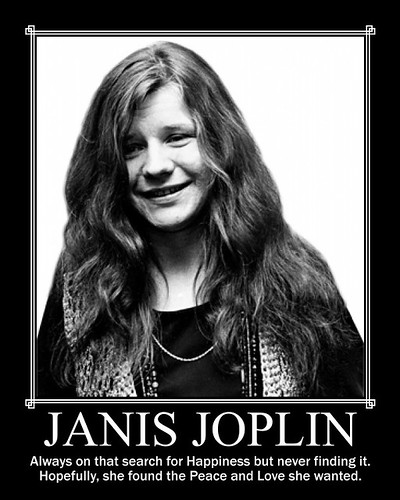
Janis Joplin. The name alone conjures images of raw, untamed talent, a voice that ripped through the very fabric of rock and roll, leaving an indelible mark on music history. She was a force of nature, a fiery comet streaking across the cultural landscape of the 1960s, noted for her powerful mezzo-soprano vocals and her “electric” stage presence. Yet, beneath the dazzling spectacle and the iconic performances, lay a deeply troubled soul battling demons that would ultimately claim her at the tragically young age of 27.
Her life was a whirlwind of artistic triumph and personal torment, a relentless pursuit of connection and a desperate struggle against internal shadows. From her humble beginnings in Port Arthur, Texas, to the dizzying heights of global stardom, Joplin’s journey was punctuated by moments of both profound vulnerability and defiant strength. It is a story woven into the tapestry of American counter-culture, a narrative that continues to resonate with fans and critics alike, cemented by her posthumous induction into the Rock and Roll Hall of Fame in 1995.
Today, we pull back the curtain on the lesser-known, more painful facets of Janis Joplin’s all-too-brief existence, diving deep into the events and struggles that culminated in her tragic passing. This in-depth look, much like the investigative spirit of a classic Rolling Stone exposé, aims to reveal the human story behind the legend, charting the heartbreaking path that led to her final, unspoken end. We explore the specific details surrounding her battle with addiction, the choices made, and the environments she navigated, providing a comprehensive account of a life lived intensely and ended too soon.

1. **Early Struggles with Addiction: The “Speed Freak” Years (1963-1965)**Janis Joplin’s foray into the vibrant, yet perilous, counter-culture scene of San Francisco in the early 1960s marked a significant turn in her life, not only musically but also personally. After leaving Texas in January 1963, “Just to get away,” as she put it, she hitchhiked to North Beach, San Francisco, with her friend Chet Helms. It was during this period that the shadows of addiction first began to deepen around her, laying the groundwork for future struggles.
By 1963, Joplin was arrested in San Francisco for shoplifting, a sign of the increasing instability in her life. The subsequent two years saw her drug use escalate dramatically, acquiring a reputation that preceded her. She became known as a “speed freak” and an occasional heroin user, descriptions that paint a stark picture of her rapid descent into substance dependency.
Beyond methamphetamine and heroin, the context notes that she also used other psychoactive drugs and maintained a heavy drinking habit throughout her career, with Southern Comfort being her preferred alcoholic beverage. Her physical state reflected this destructive lifestyle, as friends described her as “skeletal” and “emaciated” by May 1965, starkly illustrating the detrimental effects these substances had on her young body and mind. This early chapter in San Francisco was a formative, and ultimately fateful, period in her battle with addiction.

2. **A Fleeting Glimmer of Hope: Attempting Sobriety in Port Arthur (1965)**The visible toll of her escalating drug use eventually prompted an intervention of sorts from her friends in San Francisco. Noticing her dire condition, they persuaded her to return to her parents in Port Arthur. In May 1965, her friends even threw her a bus-fare party, a poignant gesture highlighting their concern and her desperate need for a change of environment away from the city’s pervasive drug scene.
Upon her return to Texas, her parents were immediately confronted with the devastating reality of her addiction, noting her alarming weight of 88 pounds (40 kg). This stark visual served as a catalyst for Janis, who, for a period, made a concerted effort to change her lifestyle. She consciously avoided drugs and alcohol, a significant departure from her San Francisco habits, and even adopted a more conventional appearance with a beehive hairdo.
During this hopeful interlude, Joplin enrolled as an anthropology major at Lamar University in nearby Beaumont, Texas, with her sister Laura later confirming social work as her major during her year there. She also found love, becoming engaged to Peter de Blanc in the fall of 1965, a relationship that had begun towards the end of her first San Francisco stint. Despite her mother’s enthusiastic wedding planning, de Blanc, who traveled frequently, ended the engagement soon afterward, leaving a void just as she was striving for stability.

3. **The Haunting Fear of Relapse: Counseling and the Music Business Dilemma (1965-1966)**Even after her return to Port Arthur and her efforts towards sobriety, the specter of her past drug use loomed large. Throughout 1965 and 1966, Joplin regularly commuted from her family’s home to Beaumont for sessions with a psychiatric social worker, Bernard Giarritano, at a counseling agency that was funded by the United Fund. These sessions provide a crucial glimpse into her internal conflict regarding her future.
Giarritano, interviewed by biographer Myra Friedman after Joplin’s death, revealed the depth of her struggle. Janis had been “baffled by how she could pursue a professional career as a singer without relapsing into drugs,” a profound dilemma for someone whose artistic path seemed intertwined with the very environment that fueled her addiction. Her drug-related memories from her previous San Francisco period continued to frighten her, indicating a deep-seated trauma and fear of repeating past mistakes.
During these sessions, Joplin would sometimes bring her acoustic guitar, her voice audible to others in the building, underscoring her undeniable musical pull. Giarritano tried to reassure her that success in the music business did not necessitate drug use. Yet, Joplin voiced a stark alternative: if she avoided professional singing, she felt destined to become a “keypunch operator, as she had done a few years earlier, or a secretary, and then a wife and mother,” mirroring “all the other women in Port Arthur,” a future she clearly recoiled from. This internal battle between her artistic calling and the fear of relapse was a heavy burden.

4. **An Unspoken Pact Broken: Confronting Drug Use with Big Brother (1966)**The call of music proved irresistible, and in 1966, Joplin’s distinctive bluesy vocal style caught the attention of Big Brother and the Holding Company, a psychedelic rock band from San Francisco. Recruited by Chet Helms, the same promoter with whom she had hitchhiked years earlier, she joined the group on June 4, 1966, initially giving her parents the impression Austin was her final destination and the location of the rock band she was joining.
However, upon her arrival in San Francisco, Joplin was still maintaining a strict stance on drug use, particularly against needles. When she shared an apartment with Travis Rivers, she made him promise that using needles would not be allowed there. This commitment to staying clean, at least from intravenous drugs, was a testament to her recent struggles and her desire to maintain sobriety in her new artistic venture.
This pact, however, was soon and dramatically broken. Bandmate Dave Getz recounted a chilling incident when, accompanying Joplin home from a rehearsal, they found guests invited by Rivers in the process of injecting drugs. Joplin’s reaction was explosive. Getz recalled, “Janis went nuts! I had never seen anybody explode like that. She was screaming and crying and Travis walked in. She screamed at him: ‘We had a pact! You promised me! There wouldn’t be any of that in front of me!'”
Getz added, “I was over my head and I tried to calm her down. I said, ‘They’re just doing mescaline,’ because that’s what I thought it was. She said, ‘You don’t understand! I can’t see that! I just can’t stand to see that!'” This powerful scene underscores her deep-seated fear and aversion to the drug use that would soon engulf her, revealing the profound emotional impact of witnessing intravenous drug activity after her own recent struggles.

5. **The Price of Stardom: Escalating Heroin Use by 1969**As Janis Joplin’s star began its meteoric ascent with Big Brother and the Holding Company, particularly after their breakthrough at the Monterey Pop Festival and the chart-topping success of “Cheap Thrills,” the pressures of fame intertwined dangerously with her existing vulnerabilities. While her musical career flourished, her personal battle with addiction intensified, taking a far darker turn than her earlier “speed freak” reputation.
By early 1969, a deeply concerning development emerged regarding her drug use: Joplin was allegedly shooting at least $200 worth of heroin per day. To put this into perspective, the context notes that this amount is equivalent to approximately $1,715 in 2024, highlighting the sheer scale and expense of her habit. This significant increase in her heroin use marked a perilous new phase in her addiction, one that would be exceedingly difficult to control.
Despite this alarming escalation, there were conscious efforts made to try and keep her clean, particularly during the recording of her first solo album, “I Got Dem Ol’ Kozmic Blues Again Mama!” Gabriel Mekler, the album’s producer, reportedly kept her away from drugs and her drug-using friends during the production process. This protective measure suggests that those around her were acutely aware of the severity of her addiction and the constant threat it posed to her life and career, even as she reached new heights of artistic expression.

6. **Woodstock’s Dark Side: Heroin and Alcohol in the Backstage Delay (1969)**The legendary Woodstock Festival in August 1969, an iconic event synonymous with peace, love, and music, became another tragic backdrop for Janis Joplin’s ongoing struggle with addiction. She arrived at the festival with her Kozmic Blues Band, initially eager to perform, having informed her bandmates that they should treat it like “just another gig.” However, the reality of Woodstock’s chaotic scheduling and immense scale quickly overwhelmed her.
Joplin’s performance was repeatedly delayed, as other bands were contractually obliged to play ahead of her. Faced with a grueling ten-hour wait after arriving at the backstage area, her resolve, already fragile, crumbled under the pressure. Instead of preparing for her set, Joplin spent a significant portion of this agonizing delay “shooting heroin and drinking alcohol” with her friend and sometimes lover, Peggy Caserta, in a tent. This was a stark contrast to the initial eagerness and professional mindset she had hoped to maintain.
Despite the heavy substance use, Joplin managed to pull through her performance, engaging frequently with the massive crowd. Pete Townshend of The Who, who performed later, witnessed her set and said in his 2012 memoir, “She had been amazing at Monterey, but tonight she wasn’t at her best, due, probably, to the long delay, and probably, too, to the amount of booze and heroin she’d consumed while she waited. But even Janis on an off-night was incredible.” Her personal disappointment with the performance was so profound that she insisted her singing not be included in the 1970 documentary film or its soundtrack, a testament to the devastating impact of her addiction on her artistry.

7. **”Out of Control”: The Troubling Madison Square Garden Performance (1969)**The year 1969 proved to be exceptionally challenging for Janis Joplin, not only professionally with the mixed reviews of her Kozmic Blues Band but also personally as her battles with substance abuse became increasingly public and severe. Beyond Woodstock, further incidents at Madison Square Garden highlighted the alarming extent to which drugs and alcohol had taken hold of her life and performances.
One particularly revealing account comes from her publicist-turned-biographer Myra Friedman, who described witnessing a duet Joplin sang with Tina Turner during the opening act for a Rolling Stones concert at the Garden on Thanksgiving Day. Friedman’s recollection painted a disturbing picture, stating that Joplin was “so drunk, so stoned, so out of control, that she could have been an institutionalized psychotic rent by mania.” This vivid description underscores the severity of her condition and the profound impact it had on her ability to perform and function.
An audio recording of this unsettling duet reportedly exists online, serving as a chilling auditory testament to Friedman’s observations. Later that year, during another Garden concert where Joplin had solo billing on December 19, some observers even believed she tried to incite the audience to riot. Joplin herself confided in rock journalist David Dalton about the immense pressure she felt, noting that Garden audiences watched and listened to “every note [she sang] with ‘Is she gonna make it?’ in their eyes,” revealing her acute awareness of the precarious tightrope she was walking between brilliance and collapse.
The year 1970 dawned with Janis Joplin at a critical juncture, having navigated the turbulent waters of fame and addiction through 1969. The Kozmic Blues Band had fractured, and the relentless demands of her career, coupled with her spiraling drug use, had pushed her to the brink. It was clear that a change was desperately needed, and for a fleeting moment, a glimmer of hope appeared on the horizon, promising a break from the very forces that threatened to consume her.

8. **A Desperate Escape: Brazil and a Glimmer of Sobriety (February 1970)**In February 1970, seeking respite and a fresh start, Janis Joplin embarked on a transformative journey to Brazil. Accompanied by her friend Linda Gravenites, who had previously designed Janis’s iconic stage costumes, this trip represented a conscious and determined effort to shed the chains of her addiction. It was a bold step, away from the familiar, dangerous environment that had become synonymous with her struggles.
During her time in Brazil, an extraordinary change occurred: Janis managed to cease her drug and alcohol use altogether. This period of sobriety was marked by newfound emotional and physical well-being, evidenced by the photographs taken by Gravenites and the press, which captured Joplin being romanced by a fellow American tourist, David (George) Niehaus, at the vibrant Rio Carnival. Biographer Ellis Amburn later noted that in Gravenites’ snapshots, they “look like a carefree, happy, healthy young couple having a tremendously good time.”
The profound impact of this detox and new romance was reflected in an international phone call interview with *Rolling Stone* magazine, where Joplin optimistically declared, “I’m going into the jungle with a big bear of a beatnik named David Niehaus. I finally remembered I don’t have to be on stage twelve months a year. I’ve decided to go and dig some other jungles for a couple of weeks.” Amburn further elaborated on Niehaus’s positive influence, stating in 1992, “Janis was trying to kick heroin in Brazil, and one of the nicest things about David was that he wasn’t into drugs.” This vibrant interlude offered a tantalizing vision of a different life, free from the grips of addiction.
9. **Return to Peril: Relapse and Relationship Complications (Post-Brazil 1970)**Despite the rejuvenating period in Brazil and the promising connection with David Niehaus, Janis Joplin’s return to the United States proved to be a tragically swift reversal of fortune. The seductive pull of her old habits and the insidious environments she inhabited quickly reasserted themselves. The sobriety she had found across continents proved fragile when confronted with the realities of her life back home, signaling a heartbreaking relapse into heroin use almost immediately upon her arrival.
Her nascent relationship with Niehaus, which had blossomed in the vibrant landscape of Brazil, was unable to withstand the renewed onslaught of her addiction. The context reveals that their romance soon dissolved after Niehaus witnessed her shooting drugs at her new home in Larkspur, California. Adding another layer of complexity, her ongoing romantic involvement with Peggy Caserta, who was also an intravenous addict, further complicated any attempts at a clean break. Joplin’s refusal to take time off and travel the world with Niehaus ultimately sealed the fate of their relationship.
Amidst these personal upheavals, the call of the stage remained irresistible. In April 1970, Joplin made final reunion appearances with Big Brother and the Holding Company at the Fillmore West in San Francisco and again at Winterland. Recordings from the Fillmore West concert were later included in the posthumously released *Joplin in Concert* (1972), with reports from the Winterland performance noting that both Janis and Big Brother were “in excellent form.” These performances, however, were an uneasy juxtaposition of her enduring artistic power and her escalating personal crisis.

10. **”My Band!”: The Full Tilt Boogie Band and Shifting Habits (May-July 1970)**Around this tumultuous period, Janis Joplin, eager to forge a new musical identity, formed her new band, initially known as Main Squeeze before being renamed the Full Tilt Boogie Band. This iteration of her backing group was a departure from the Kozmic Blues Band, comprising mostly young Canadian musicians and featuring an organ but notably no horn section. Joplin took a more hands-on approach in its formation, a testament to her desire for artistic control and a more unified sound.
Her excitement about this new venture was palpable, as she was famously quoted saying, “It’s my band. Finally it’s my band!” This declaration signaled her determination to lead and shape her musical direction, a stark contrast to previous collaborations. In May 1970, the Full Tilt Boogie Band, initially billed as Main Squeeze, embarked on a nationwide tour, with their debut performance at a Hells Angels event in San Rafael, California, on May 21st.
However, even with this new band and a declared intention to be drug-free, the shadows of addiction still loomed. While she told people she was drug-free, her drinking reportedly increased. The Hells Angels party offered a glimpse into her precarious state; while some, like Nick Gravenites, described her singing as “stupendous,” Big Brother guitarist Sam Andrew offered a more somber assessment, stating twenty years later, “She was visibly deteriorating and she looked bloated. She was like a parody of what she was at her best. I put it down to her drinking too much and I felt a tinge of fear for her well-being. Her singing was real flabby, no edge at all.” It was during this period that she also began adopting her signature multi-colored feather boas, a vibrant exterior perhaps masking an internal struggle.

11. **The Final Tour and Unmarked Graves: Festival Express and Bessie Smith (June-August 1970)**The summer of 1970 saw Janis Joplin and the Full Tilt Boogie Band embarking on the legendary Festival Express tour from June 28 to July 4. This unique traveling festival brought together an extraordinary lineup of musicians, including Buddy Guy, The Band, and the Grateful Dead, for concerts in Toronto, Winnipeg, and Calgary. Footage of her electrifying performance of “Tell Mama” in Calgary would later become an MTV video, cementing her place in rock history even as her personal life spiraled.
Amidst these high-profile performances, Joplin made two significant appearances on *The Dick Cavett Show*. Her June 25, 1970, appearance gained notoriety when she announced her intention to attend her ten-year high school class reunion, candidly admitting that her schoolmates had “laughed me out of class, out of town and out of the state.” This poignant revelation highlighted the enduring pain of her formative years, despite her global stardom. Her reunion experience on August 14, accompanied by David Niehaus, road manager John Byrne Cooke, and her sister Laura, was reportedly unhappy, as she denigrated Port Arthur and the classmates who had humiliated her a decade prior.
A profoundly symbolic gesture occurred on August 7, 1970, when a tombstone was finally erected at the previously unmarked grave of Bessie Smith, the “Empress of the Blues.” Joplin, who frequently cited Smith as a musical influence, jointly paid for the stone with Juanita Green, a registered nurse. This act underscored Joplin’s deep connection to her blues roots and her reverence for the artists who paved the way, even as her own journey was nearing its tragic conclusion.
12. **Creative Surge Amidst Chaos: “Mercedes Benz” and Pearl Sessions (August-October 1970)**In late August 1970, Janis Joplin checked into the Landmark Motor Hotel in Hollywood, a hub known for attracting drug users, to begin rehearsing and recording her new album, *Pearl*, at Sunset Sound Recorders. This period, despite the surrounding chaos of her personal life, proved to be an incredibly fertile creative phase. She collaborated with producer Paul A. Rothchild, renowned for his work with The Doors, pouring her raw talent into what would become her biggest-selling album.
During these intensive sessions, her personal life remained turbulent. Joplin continued a relationship with Seth Morgan, a 21-year-old UC Berkeley student and cocaine dealer who had visited her in Larkspur. They even became engaged in early September, although Morgan’s presence at her many rehearsals and sessions was minimal, occurring for only eight occasions. The intensity of her professional life was clearly overshadowed by the instability of her personal affairs.
It was during this time that Joplin, alongside fellow musician and friend Bob Neuwirth, penned the iconic song “Mercedes Benz.” The genesis of the song, partially inspired by a Michael McClure poem, unfolded between two Capitol Theatre shows. Neuwirth recounted to *The Wall Street Journal* in 2015 how they collaboratively wrote the lyrics on bar napkins at a nearby “gin mill” called Vahsen’s, with Joplin crafting the first two verses and Neuwirth adding the third. This impromptu creation, recorded in a single take on October 1st, became her final completed recording, a stark, satirical commentary that would endure as a classic. The album also featured her self-penned opening track, “Move Over,” reflecting her feelings about how men treated women in relationships.

13. **A Web of Addiction: Caserta, the Dealer, and Lingering Fears (September 1970)**The Landmark Motor Hotel, far from being a sanctuary, became an unwitting accomplice in Janis Joplin’s final spiral. Peggy Caserta, her close friend and fellow intravenous addict, had also checked into the Landmark, a place she chose specifically because it “attracted drug users.” Caserta, who had previously owned one of Haight Ashbury’s first clothing boutiques, admitted in her book *Going Down With Janis* (1973) to smuggling cannabis throughout California during this time.
The context reveals a tragic encounter in September 1970, when Joplin learned of Caserta’s presence at the Landmark from a heroin dealer. Despite a mutual decision made in April to stay away from each other to prevent enabling drug use, Joplin reportedly “begged Caserta for heroin.” When Caserta refused, Joplin’s chilling response was, “Don’t think if you can get it, I can’t get it.” This exchange underscores the desperate nature of Joplin’s addiction and the complex, often destructive, dynamics of her relationships.
Unbeknownst to Joplin’s publicist, Myra Friedman, at the time, this fateful encounter occurred just a week before Jimi Hendrix’s death, a detail Friedman later pieced together for her book *Buried Alive*. Within days of this interaction, Joplin had become a regular customer of the very same heroin dealer who had been supplying Caserta. This swift descent highlights the pervasive and inescapable nature of the drug environment she found herself in, a stark contrast to the efforts of her manager Albert Grossman and Friedman, who had staged an intervention the previous winter in New York, far removed from the California scene.

14. **The Final Hours: Last Recordings, Arguments, and a Fateful Drive (October 1-4, 1970)**The first days of October 1970 were a paradox of creative brilliance and deepening personal turmoil for Janis Joplin. On October 1st, she completed her last recording, “Mercedes Benz,” in a single, poignant take. Just two days later, on Saturday, October 3rd, she visited Sunset Sound Recorders to listen to the instrumental track for Nick Gravenites’s song “Buried Alive in the Blues,” agreeing with producer Paul Rothchild to record the vocals the following day. These were moments of artistic fulfillment, yet they were shadowed by gathering storm clouds.
Sometime on that Saturday, the fragile peace of her personal life was shattered. Joplin learned that her fiancé, Seth Morgan, had met other women at a Marin County restaurant and invited them to her home. Those at Sunset Sound Recorders overheard Joplin expressing both her palpable anger about Morgan’s infidelity and her concurrent joy about the positive progress of the recording sessions. This heartbreaking juxtaposition of emotions painted a picture of a soul teetering on the edge, experiencing extreme highs and lows simultaneously.
Later that night, Joplin and organist Ken Pearson left the studio together, with Joplin driving her iconic Porsche to Barney’s Beanery, a West Hollywood venue, where they met Bennett Glotzer, a business partner of her manager Albert Grossman. After midnight, she drove Pearson and a male fan to the Landmark Motor Hotel, where she and Pearson were staying in separate rooms. During the ride, the fan’s persistent questions about her singing style were met with silence, as “she mostly ignored him,” as Pearson later told Myra Friedman. As they prepared to part ways in the lobby, Joplin voiced a chilling fear, perhaps in jest, that Pearson and the other Full Tilt Boogie musicians might decide to stop making music with her. They then separated, retreating to their respective rooms.
On Sunday evening, October 4, 1970, Janis Joplin was discovered dead on the floor of her room at the Landmark Motor Hotel by her road manager and close friend, John Byrne Cooke. While initial newspaper reports stated that only alcohol was present, and no other drugs or paraphernalia were found, a later 1983 book co-authored by Los Angeles County coroner Thomas Noguchi, along with Joseph DiMona, revealed a more disturbing truth. The book claimed that evidence of narcotics had been removed from the scene by a friend, only to be returned after the individual realized an autopsy would undeniably expose the drugs in her system. Noguchi, who performed the autopsy, officially determined the cause of death to be a heroin overdose, possibly compounded by alcohol, ruling it accidental. John Byrne Cooke himself suspected that Joplin had received heroin of a potency far greater than usual, a theory supported by the concurrent overdoses of several other customers from the same dealer that tragic weekend. The unspoken details suggest a devastating chain of events, from a broken promise to a fatal dose, culminating in the silencing of one of rock’s most powerful voices. Both Peggy Caserta and Seth Morgan had failed to meet Joplin on Friday, October 2nd, the last full day she lived, deepening her disappointment just before her final hours.
Janis Joplin’s untimely death at the age of 27 was not merely the end of a life; it was the abrupt cessation of a revolutionary talent, a voice that roared with passion, vulnerability, and an unyielding quest for connection. Her journey, marked by soaring artistic triumphs and soul-crushing personal battles, mirrors the tumultuous era she so vividly embodied. The painful details surrounding her death, from her desperate attempts at sobriety in Brazil to the perilous return to an environment rife with addiction, underscore the immense pressures that ultimately overwhelmed her. Yet, even in her final, heartbreaking moments, Joplin left behind a legacy that continues to resonate, a testament to her enduring power and the raw, unvarnished truth she poured into every note. Her story serves as a potent reminder of the human cost behind the legend, a complex narrative of brilliance, fragility, and the unspoken end that tragically claimed one of music’s most iconic stars.




